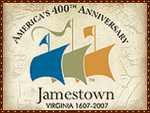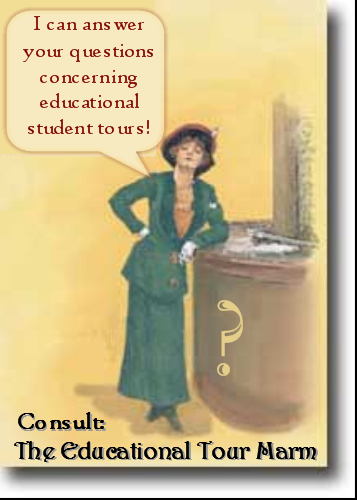Thursday XIII: 081607 Thirteen Facts About the Borough of Queens

The Flag of the Borough of Queens, New York City -
Answer to Wordless Wednesday 081507
Adopted June 3, 1913, the Queens Flag tells the history of the borough from the time of its purchase from the Indians by Dutch governor William Kieft, whose shield is typified by the blue, white and blue stripes.
 The circle of wampum denotes the Indian name for Long island - Seawanhaka - at the time of its discovery. In the Indian language, Seawanhaka meant wampum.
The circle of wampum denotes the Indian name for Long island - Seawanhaka - at the time of its discovery. In the Indian language, Seawanhaka meant wampum.
First settlers are represented by the two flowers - the tulip, emblematic of the Dutch, and the double red and white rose of the English, representing the Houses of York and Lancaster.
The Queen's crown signifies the name of the county and borough in honor of Queen Catherine of Braganza. The date indicates the year in which Queens became a part of the City of New York - January 1, 1898.
Thirteen Facts about the Borough of Queens
- It is the Largest of New York’s five boroughs (or counties) 109 Square miles – about 35% of the total area of New York City
- Before European settlement, northeastern Queens was inhabited by the Matinecoc, a tribe of Algonquian-speaking people, Some neighborhoods in Queens were named for local Indian tribes: Jamaica, named for the Jameco Indians, Rockaway, named after the Reckowacky Indians, and Maspeth, named for the Mespat Indians, who inhabited the headwaters of Newton Creek. There were thirteen Native American tribes represented on the lands that were to become known as Queens. The earliest known inhabitants of Northeast Queens — Bayside, Flushing, Douglaston and Little Neck — were the Matinecock Indians, one of the thirteen tribes on Long Island. They were a numerous and prosperous tribe who engaged in hunting and fishing Their prime industry, however, was the manufacture of wampum, which is a type of small cylindrical bead made from white or purple seashells. The shells were found in the bays and inlets of the north shore of Long Island, and were of superior quality. They were highly prized by the Indians who lived in interior areas. They used the beads to make necklaces, or wove them into belts of considerable beauty. The Indians attached a mystical power to the beads. They were used not only to decorate clothing, but also for other purposes — to honor a noble deed, to seal a contract, to pay tribute, and for other symbolic reasons. It is generally believed that wampum was used as monetary exchange, but the Indians did not use it as such until the practice was introduced by the Dutch sometime later.
- Sailing for the Dutch West India Company in 1614, Adrian Block was the first European to see Queens and the first to discover that Long Island was an island.
- The land that today encompasses Queens was purchased from the Indians in 1639 by the very unpopular Dutch Governor William Kieft (Director General of New Netherland 1638-1646).
- 1657 Flushing Remonstrance is considered the forerunner of our Bill of Rights. This year marks the 350th anniversary of the Flushing Remonstrance. In 1662, John Bowne openly defied the ban and was caught allowing Quakers to worship in his home. He was imprisoned and banished to Holland for judgment. He successfully argued his case and the directors of the Dutch West India Company declared Bowne a free man. The company then sent the Dutch New World officials a note: "Let everyone remain free."
- Queens County was one of the original 12 counties created in 1683 when the General Assembly of Freeholders reorganized the governmental structure in all of the province of New York into 12 counties, each of which was sub-divided into towns.
- The oldest continuous house of worship in New York City is the Old Quaker Meeting House built in 1694
- Queens was named in honor of Queen Catherine of Braganza, wife of Charles II
- Nathan Hale was captured by the British in Queens and then transported to Manhattan to be hanged.
- Flushing Meadow Park was the site of two World’s Fairs (1939-1940 and 1964-65). A few iconic vestiges remain of both fairs (the New York State Pavilion towers, the New York City Pavilion, the Unisphere) and is the site of the U.S. Tennis Open Stadiums (named for longtime resident Louis Armstrong, and tennis greats Arthur Ashe and Billy Jean King.)
- In 1921, Anne Francis Robbins was born in Flushing. She would later be known as Nancy Davis and, finally First Lady Nancy Reagan.
- Flushing was the first ‘Hollywood’ and studios in Astoria, where the Marx Brothers filmed two of their comedies, are still used for movies, television, and commercials. Silvercup Studios took over a bread bakery called Silversup that produced round slices.
- Queens is the most ethnically diverse county in the United States. Immigrants comprise 46.7% of the total population of 2,229,379
If this were a Thursday Fourteen, I would have added that I was born in Queens, and very proud of it!
For a fun photo tour of Queens history, sites, celebrities, and popular culture, please click here
Queens A Patchwork of Cultures















8 comments:
You know, I grew up not that far from there and spent plenty of time in the borough, and I didn't know any of that. Fascinating stuff, thanks for sharing.
Oh that's really a very interesting TT ! I enjoyed reading it very much it's always so interesting to know more about history. I knew that NY was originally called New Amsterdam, but about Queens history I didn't know that much.
That was extremely interesting. As a former quaker, I did know about the quaker ban...but the part that interested me was the information about wampum and the GORGEOUS flag.
I laughed when I read the note at the T13 blog, realizing that indeed it IS the case that this Florida gal's entire view of Flushing and Queens came from the Fran Drescher thing...and I didn't even really like that show!
What a wonderfully informative post. I love learning something new. Thanks for that great history lesson.
My TT is about my Summer travels.
Very informational! I never knew any of the history of Queens-Thanks for sharing! Thanks for stopping by!
Thanks for visiting my TT.
I really enjoyed yours which was packed with history. I have jotted down notes for my American History class.
I would love to visit the museums and gardens in your slide show, and walk around the neighborhoods, it all looks lovely. Until I get the chance to visit in person I'll have fun visiting the links you provided.
I never knew those things about Queens. Thanks for a great list!
Happy Belated TT :)
Very interesting list! I've never been to New York. Maybe someday...
Thanks for visiting my TT. :-)
Post a Comment